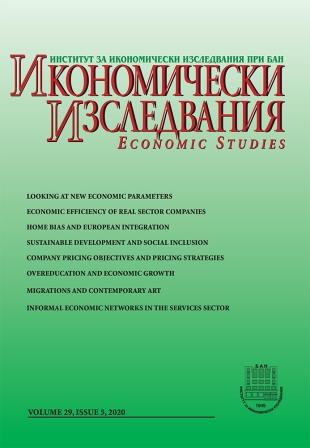Learning about Migrations through Contemporary Art
Learning about Migrations through Contemporary Art
Author(s): Raúl de Arriba Bueno, María Vidagañ, Ana BotellaSubject(s): Economy, Socio-Economic Research
Published by: Институт за икономически изследвания при Българска академия на науките
Keywords: Migrations; contemporary art; new narratives; art-based research
Summary/Abstract: Since art is a world-recognized platform for the representation and interpretation of social processes, in this paper we take an original approach and use the opportunities offered by art-based research in order to analyze the development of new narratives about the migration phenomena. Particularly, we apply a selected review of the main work of several contemporary artists whose interest is strongly focused on the economic, social and political issues related to migrations. Moreover, the paper explores the possibilities and obstacles offered by art for the dissemination of related research. In this regard, we believe that our paper contributes by enhancing the important relationship between art and social phenomena, like migrations. This relation includes, at least, two shared areas: first, the understanding that art is a space for the representation of various social processes traditionally addressed by social science. For instance, although political science scientists, economists, sociologists, historians, anthropologists, geographers, etc. have extensively dedicated their work to study the migration phenomena, it is less recognized the large work of artist on migrations. Accordingly, artists are accustomed to transdisciplinary intellectual work and creativity and therefore, the discourse of art on the migrations phenomena brings a fresh perspective and is welcome. Second, one of the differences between scientific research and artistic research is that in the latter, the decisions on how to dispose the elements that participate in the research and even the protocol itself is decided previously by rationalistic hypothesis and method. However, in artistic research, a final result is not as relevant, but rather the importance of the research lies in the process itself. The process approach leads each artist sets their own rules of action and this does not have to be justified beforehand. In this sense, our aim is not to replace the scientific discourse but to rescue the artistic approach as complementary and take advantage of its seductive, emotional, creative and formative potential.
Journal: Икономически изследвания
- Issue Year: 2020
- Issue No: 5
- Page Range: 143-155
- Page Count: 13
- Language: English

